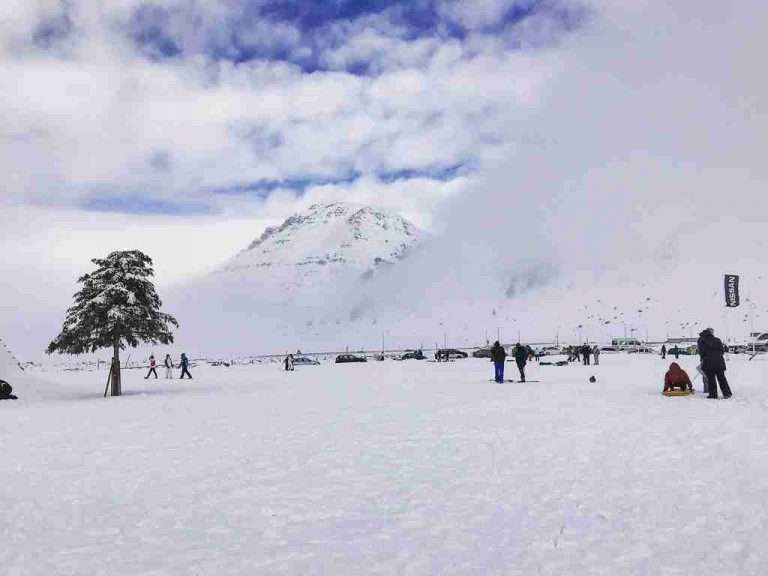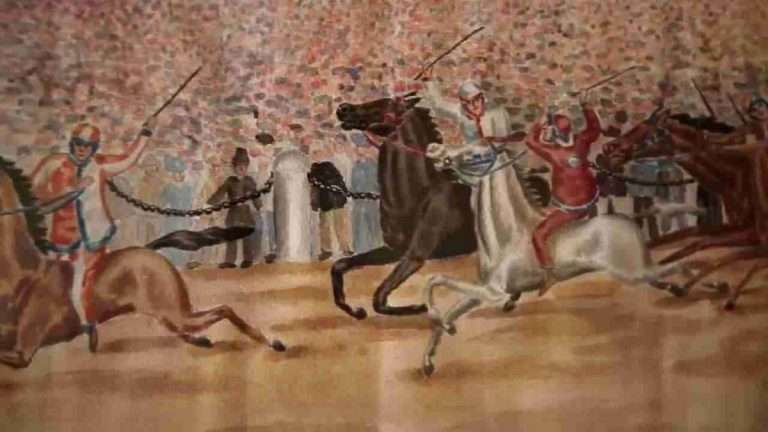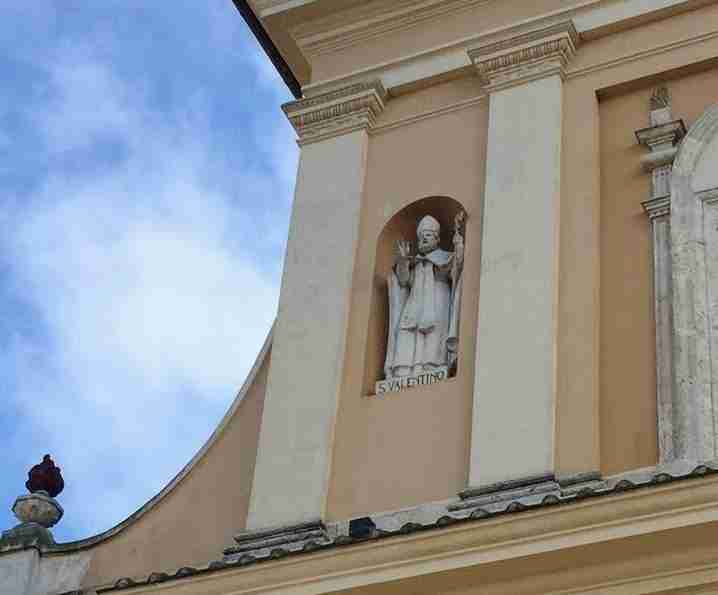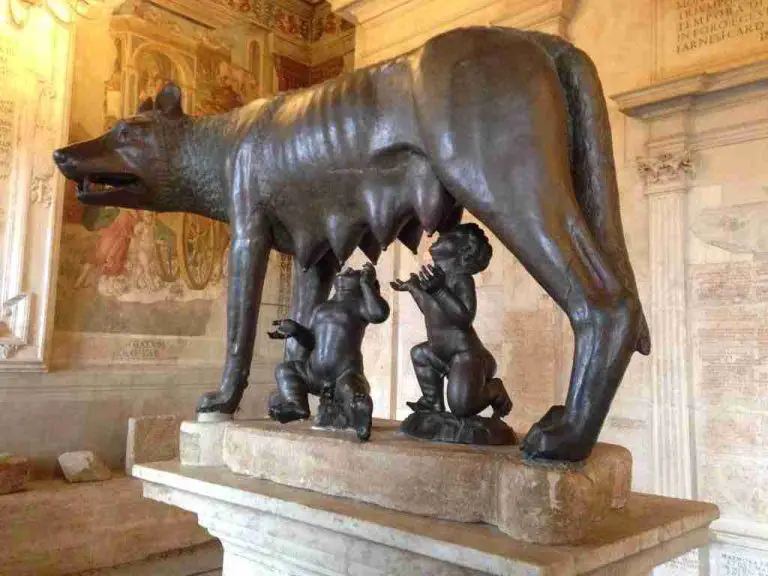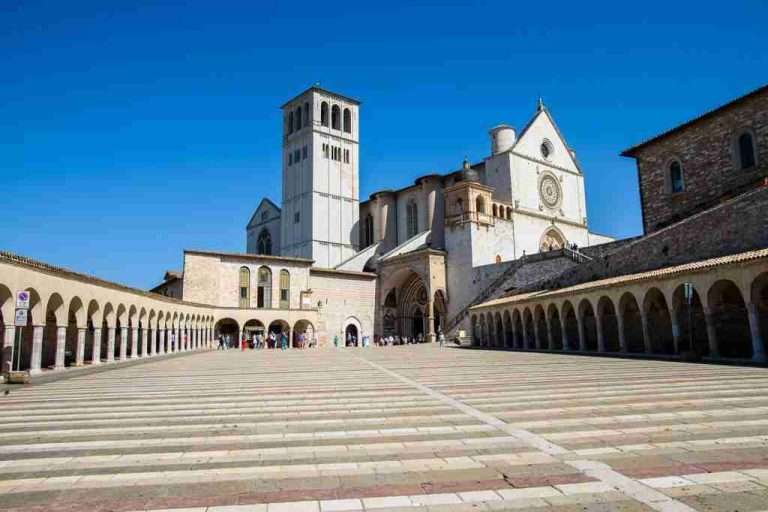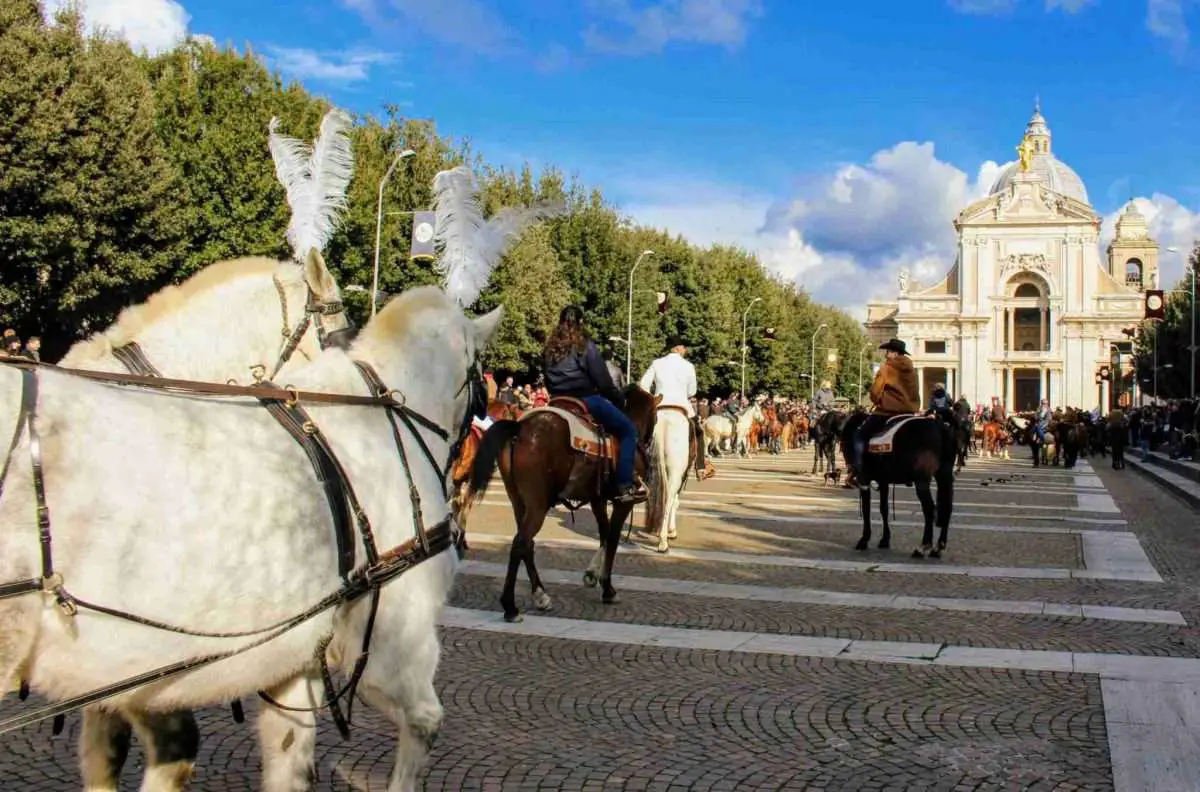
In late 1859 and early 1860, an outbreak of equine influenza became a real cause of concern in central Italy. Horses in Santa Maria degli Angeli, a hamlet in the valley below Assisi, were particularly vulnerable to the disease, as the area was a common stop and changeover station for couriers, stagecoaches, and carriages along the well-trodden road.
So villagers turned to Sant’Antonio Abate, patron saint of domesticated animals, whose feast day on 17 January was soon approaching.

Horse owners prayed to Sant’Antonio Abate to protect the horses and asked the religious order of the Porziuncola, Saint Francis’s tiny church around which the Basilica of Santa Maria degli Angeli is built, to make a triduum (three days of prayer leading up to a feast day). Then, on the Feast Day of Sant’Antonio Abate, they held a procession in the saint’s honor and offered food to the poor (known as the Piatto di Sant’Antonio).
The period of equine influenza eventually passed without doing massive damage to the livestock in the local stables, giving way to faith in Saint Anthony’s miracle and a festival.


Today, the event known as the Piatto di Sant’Antonio takes place every year on the Feast Day of Sant’Antonio Abate (17 January) or on the following Sunday. It features a procession of a wide variety of horses, both mounted and riderless; food and charity for the needy; mass at the Basilica of Santa Maria degli Angeli; and a very popular blessing of the animals, from livestock to pets, in the wide piazza in front of the church.

But wait — I thought that Saint Francis of Assisi was the saint who blessed the animals?
You’re right. The blessing of the animals that many people know about happens on 4 October during the feast day of Saint Francis. Both saints are patrons of the animals. The fact that this festival takes place in Assisi makes it all the more confusing.
Further, Sant’Antonio Abate, also known as Anthony Abbot or Anthony the Great, is often confused with Saint Anthony of Padua, whose feast day is 13 June. While the Padovan saint is better known, Antonio Abate has many adherents in Italy, most notably in southern regions where he is celebrated with bonfires.

I took these photos of a festival inspired by an epizootic (the term for a non-human epidemic) several years before a pandemic would ravage the Italian peninsula. And I am writing this post in 2021, a year when big gatherings and processions have been restricted due to COVID. It’s an unfortunate irony and I hope that the community of Santa Maria degli Angeli will get to enjoy all facets of its festival in full next year.
All photos © Melanie Renzulli
Last updated on May 8th, 2021Post first published on January 17, 2021

